It is the early hours of Saturday morning in Hakkasan Las Vegas, and the star turn has just taken the stage. Tijs "Tiësto" Verwest, who shares the title of resident DJ at the world's biggest EDM club with Calvin Harris, is extremely well-preserved – he looks a decade younger than his 45 years – but, with the best will in the world, he cannot be described as the most visually prepossessing star in the dance music firmament. Nor does he go in for the grandstanding showmanship favoured by his peers. The music Tiësto plays – the poppier, housier end of EDM, not a million miles from the music that thrived in mainstream dance clubs in the UK in the 90s and was dismissed by purists as "handbag house" – goes unembellished by the kind of antics favoured by, say, Steve Aioki, who throws cake and sprays champagne over audiences and rides on their upturned hands in an inflatable dinghy. But judging by the crowd's reaction, you would think Tiësto was the most magnetic performer in entertainment history. The dancefloor at Hakkasan is so packed that no one was really dancing in the accepted sense even before Tiësto came on (EDM audiences don't really dance, notes Steve Angello, formerly of EDM superstars Swedish House Mafia, "they jump"). But when Tiësto appears almost everyone stops moving, takes out a cameraphone and starts filming him, utterly rapt.
If you were looking for evidence of how EDM has taken over America, and Las Vegas in particular, you wouldn't necessarily need to go to Hakkasan. You could just drive from the airport to the strip and look at how many of the giant billboards now advertise not legendary singers or magicians or entertainers, but DJs: on the side of the MGM Grand Hotel, which houses Hakkasan, Tiësto's face now takes up as much space as that of Vegas stalwart David Copperfield.
But the club still seems the most potent emblem of EDM's commercial ascendancy, proof of how in the space of a few years, it has swept through the US, changing Vegas nightlife to such a degree that the man behind it, Angel Management Group CEO Neil Moffitt – a Midlander who cut his teeth in the nightclub business running Birmingham club Godskitchen and the Global Gathering dance music festivals – claims dance music is now "probably a bigger revenue-generator" than the big shows for which the city is famed. "I think those big shows still have a place in Vegas, Cirque du Soleil's shows are amazing," he says. "But revenue-wise, at this point, nightclubs and affiliates of the nightclubs generate significant amounts, more than the shows today."
That is more than braggadocio. The Colosseum at Caesar's Palace, where Celine Dion, Elton John, Rod Stewart and Shania Twain are resident acts, has a capacity of 4,300, but Hakkasan holds more like 7,000, with what appears to be a constant churn of people leaving and arriving throughout the night. Furthermore, once they are seated and enjoying the show, no one at the Colosseum is buying drinks at astronomical prices. At Hakkasan, waitresses constantly weave through the crowd carrying huge, three-litre bottles of Grey Goose Vodka with LED lights inside, taking them to the VIP booths that circle the dancefloor. As Moffitt puts it, "beverages are the key economic driver". That is in marked contrast to British superclubs of the 90s, where hardly anyone bought alcohol because everyone was on ecstasy. Indeed, some people go much further than Moffitt in describing EDM's impact on Vegas: in a feature in the New Yorker last year, one promoter claimed that casino magnate Steve Wynn had made so much money from the four nightclubs in his Vegas resorts that even gambling was now a mere "amenity".
Apparently conceived by Moffitt during a visit to the upscale Chinese restaurant of the same name in central London, Hakkasan involves suitably mind-boggling figures. On its opening last April, one report put the club's cost at nearly $200m (£117m), with $70m of that going on DJ fees for the first year alone. It spans 80,000 sq ft (7,400 sq metres) and one oft-quoted line is that you could fit the White House inside it with 25,000 sq ft to spare. Certainly, wandering between its various floors at peak time on a Friday night, I manage to get so hopelessly lost I start fearing I'll never see my friends and family again, although to be fair I was in a state of shock at the cost of my gin and tonic.
Mind-boggling stories are also attached. Hakkasan Ltd is controlled by Sheikh Mansour bin Zayed al-Nahyan, the owner of Manchester City, a man with a personal fortune estimated at $4.9bn. Nevertheless, at the end of 2012, the Las Vegas Sun newspaper claimed the nightclubbing venture was "bankrolled and backed by a mega-wealthy Middle East billionaire" in an act of spite after he was denied the table he wanted in another Vegas club (Moffitt calls this story "comic-book stuff"). Another tale, reported in the New Yorker, had Hakkasan poaching resident DJs from its biggest competitor, Steve Wynn's XS, by sending them personalised pitch books, listing a menu of what Hakkasan was prepared to offer: not just a fee rumoured to be anywhere from $250,000 to $300,000 per night (figures Moffitt has called "bullshit"), but a Maybach limousine and chauffeur, a two-storey Skyloft suite with a butler and access to a fleet of private jets.
Whatever Hakkasan did, it worked. Every one of the XS residents that the club approached jumped ship: Tiësto, Calvin Harris, Afrojack and Deadmau5 (the latter subsequently returned to XS, which now also boasts David Guetta, Avicii and Steve Angello among its exclusive residents). "Luring people away is not really the word I'd use," Moffitt says, carefully, although it has to be said, he doesn't seem in any great rush to offer an alternative phrase. "I answer that question with a wry smile, being honest." He pauses. "It's important to me to have all the right people in the building, whoever those names may be. You need some anchor acts in the portfolio to expose the product. If I'd led with Danny Avila, who nobody knew that much at that time, would that have put bums on seats? Nowhere near as much as Calvin Harris. I wanted to open something that in my mind was what I call a category killer, which means the market leader. So I knew what I was going to get and yes, it was important to me to get them."

There is an argument that, just as Ibiza – with its historical atmosphere of licentiousness and tendency to vague hippy mysticism – made an ideal spiritual home for acid house in the late 80s, so Las Vegas is the perfect fit for EDM: it's brash, loud, obsessed with spectacle (unassuming though Tiësto himself may be, his Hakkasan performance is backed up by a suitably eye-popping multi-video-screen visual overload), not much interested in subtlety and unashamedly commercial. But it was not ever thus: it is perhaps worth noting that, a few years ago, Tiësto was told that no dance DJ would ever hold a residency in a Las Vegas club. "I used to play Vegas once in a while, pretty much the only EDM DJ that ever played there," he says. "Everything was hip-hop. My dream was to have a residency there, I talked to club owners and promoters and they said: 'It would be great, but it will never happen, the market is not like that.'"
Why have things changed so dramatically? The most prosaic answer is probably that offered by Moffitt: around the time EDM started taking off in the US – buoyed by social media that helped disseminate music that American radio wouldn't play – Vegas experienced a slump. "Around 2007, the economy went into meltdown," he says. "People still go out and have a drink, and they still have to eat, but they don't necessarily need to gamble. Las Vegas needed to find a new model." Fortuitously, not long afterwards, big EDM events such as the Electric Daisy Carnival (EDC) festival started hosting parties in the city: 230,000 people turned up to the Electric Daisy Carnival in 2011 and an answer to Las Vegas' woes suddenly seemed to be staring the city's impresarios in the face. By the time XS shifted its music policy from hip-hop to EDM five nights a week, the resort's last objection to dance music had been broken. "When I first came to Las Vegas, I remember talking to casinos about getting the Paul Oakenfolds of this world to come to the market," Moffitt says, "and I got: 'No, it's that rave stuff. We're not having that in our casinos.' Now, it's not rave stuff, it's commercial music that's played on the radio that their kids are listening to on the way to school. They know that people go to the nightclubs to have a good time and have a drink and let their hair down, then go home at the end of the night. They don't have the catastrophes and the bad press that we used to have years ago, for all the reasons …" His voice trails off. "For all the reasons that we'd best leave alone," he concludes.
He's got a point. The rise of Hakkasan seems symbolic of the moment when dance music finally becomes truly mainstream entertainment in America, when EDM severs whatever last, vague ties it may have had to the druggy, authority-baiting, subcultural US rave scene of the 90s with its hippyish credo of PLUR: Peace Love Unity and Respect. Even the deaths of three people attending last month's EDC event are unlikely to change that perception in Vegas, because in superclubs such as Hakkasan, there's absolutely no way of kidding yourself you're taking part in some kind of countercultural event, that you're part of some kind of knowledgeable cognoscenti. Half the men here are in suits. There are hen and stag nights present. As a fortysomething rave scene veteran, I had feared I would be the oldest person here, but no: there are guys in the VIP booths. The question of what happens next hangs over Hakkasan's success. Already people are predicting that EDM is going to be a passing fad in Vegas. Last September, Jesse Waits, managing partner of XS, flatly told the New Yorker that the superstar DJ bubble "may not last longer than next year". If that's the case, the Vegas resorts doesn't really give the impression of being the kind of places that will lovingly nurture a more underground dance scene. Moffitt is more bullish. "I don't think anybody can make that prediction," he says. "We're really at the mercy of the DJs. There's a whole generation of kids out there who are growing up listening to electronic music and they're not old enough to go to nightclubs yet. So you have to believe that if the DJs do what they're supposed to do, which is to continue to evolve, you have to believe it is around to stay. But if they get too anal, like they did in the UK in the mid-2000s, when certain DJs wanted to go deeper and darker and dirtier and basically filled clubs full of dudes because girls wouldn't dance to that garbage any more … we totally destroyed our own club scene with snobbery. If people in the UK are going to turn their noses up at the American EDM explosion, well, you know what?" He laughs. "It doesn't matter what they say."
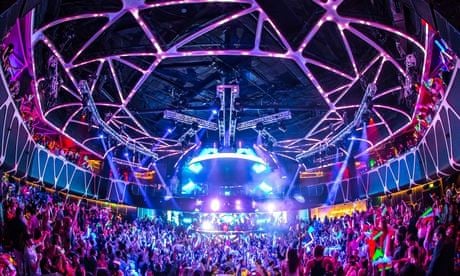
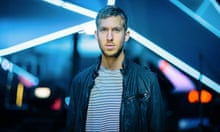
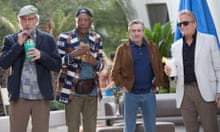
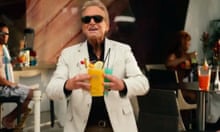
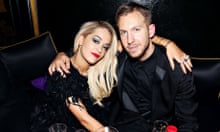
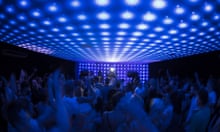
Comments (…)
Sign in or create your Guardian account to join the discussion